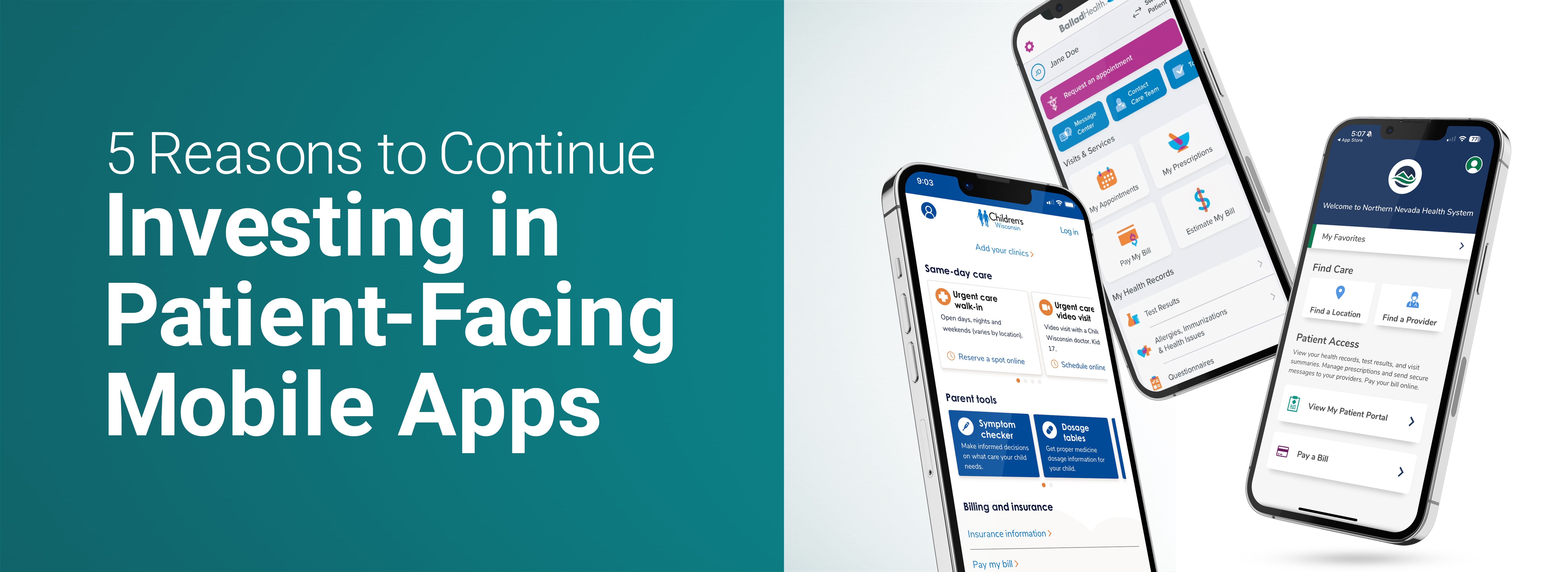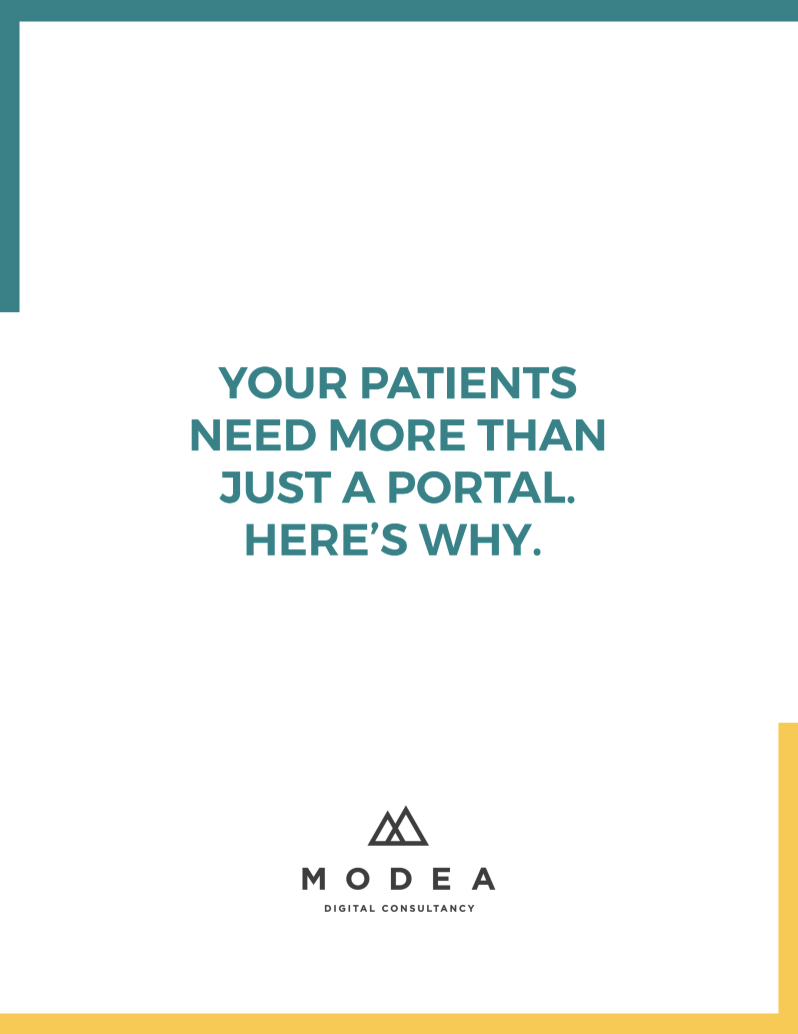
If you pull your phone out and look at some of the most frequently used apps, what do you see? Are they applications that require authentication every time you log in? Do they require you to make a phone call or not allow you to easily accomplish the task that you opened the app originally to do in the first place? Do your favorite brands punch you out to a third-party platform with unfamiliar branding and a disconnected user experience?
Chances are, most of the mobile apps you use in your day-to-day make your life easier, not harder. Perhaps you’re using your phone to make a quick purchase with a few taps or to book your weekly workout classes. We have come to rely on our favorite apps to deliver a seamless user experience that makes it easier to accomplish our goals.
So, why do we continue seeing this in so many healthcare systems with dated mobile apps that often produce more headaches and frustration for the user than they should?
While we have made significant progress on the mobile app and technology front in healthcare over the last few years, there is still much work to be done. To help paint this picture of what the future looks like for mobile applications and usage in healthcare, we have put together five important statistics we think you should know.
#1 – Investment in mobile health applications is set to more than double by 2030
In 2021, digital health apps available on app stores numbered around 350,000, with $13.4 billion invested in this growing trend. By 2030, experts predict that the same investment will more than double as the healthcare industry continues to understand increasingly how apps fit into consumers’ daily lives and make a significant impact.

#2 – 93% of healthcare professionals believe mHealth apps can improve patient outcomes
This really shouldn’t come as a surprise, with rapid adoption and increased research into the effectiveness of mobile apps. Almost every healthcare organization we speak to is looking to invest more resources into their consumer-facing mobile app(s). A significant factor in these statistics is the ability to quickly book appointments, receive alerts, reminders, and communicate seamlessly with providers.
#3 – Mobile apps are a part of everyday life
Continued growth in recent years has led to approximately 85% of adults in their 50s and 60s using smartphones. Alongside the younger generations already reliant on this technology, the aging population is adapting to using technology for improved daily experiences. This demographic increasingly relies on technology. Healthcare apps expect to play a significant role in access to care and care management for people of all age groups and demographics. With nearly two-thirds of US adults using a healthcare-related mobile app in the last 12 months, the demand is there.
#4 – Mobile apps can help increase revenue while decreasing time spent on repetitive tasks and resources used
Healthcare organizations face rising costs of care and increasing expenses for providers and talent. This shifts the focus towards operational efficiencies, streamlined workflows, and lower costs. The goal is to continuously improve patient care amidst these challenges. One of the best ways to do that is to invest in mobile apps for your patients and consumers.
Offering an app that builds trust in your brand allows patients to schedule appointments, check results, communicate with their providers, access telehealth, request prescription refills, and more. This saves time and allows your staff to focus on other daily tasks.
#5 – Consumers want easy-to-use experiences for managing healthcare
We conducted research on mobile usage to help healthcare organizations better understand consumer needs for mobile, specifically for managing their digital healthcare. More than half of the respondents in our survey said they want to “frequently use a mobile device to manage healthcare needs.” Among this group, women were more likely to want to use a mobile device to manage care. Also, the 30 – 44 year old cohort was the most interested in mobile usage out of any other age group. To add to this, the user experience is also key to improving access to care with mobile apps. Studies show that 41% of patients say they would stop going to their current provider over a poor digital experience.
From our work with dozens of hospitals and health systems, we understand that women aged 30 – 44 are a key demographic. However, all consumers desire easy-to-use experiences. Today’s healthcare consumers are comfortable using their phones to access and manage care, and in most cases, expect to do so.
The ongoing research and the results paint a clear picture of healthcare and mobile app usage. We have only cracked open the door. We have an exciting future ahead in delivering a better patient experience that can lead to better access to care for all demographics across the country.


